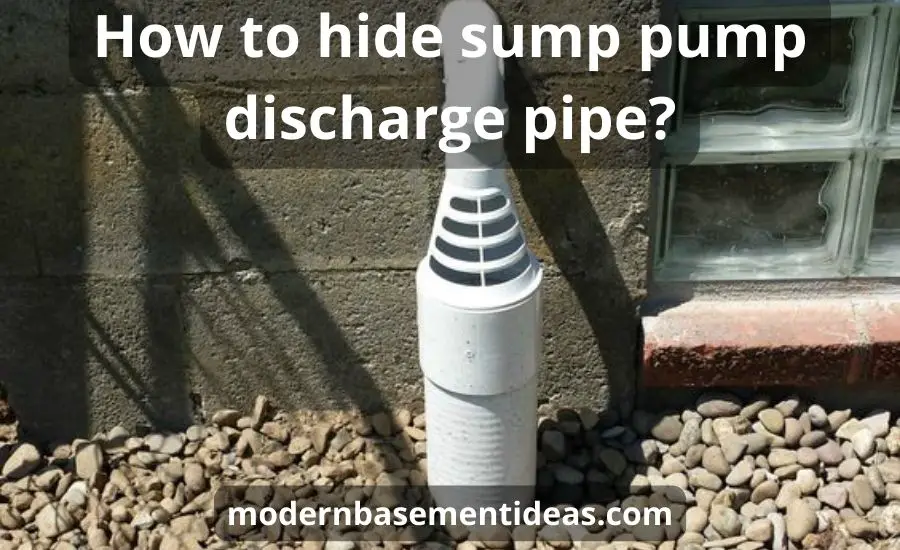Many homes include sump pumps. Sump pumps work by pushing water out of the basement or crawlspace to help avoid flooding and water damage. The discharge pipe, however, can be ugly and provide a tripping risk in your yard as it transports the water away from the house.
Fortunately, there are several techniques you may use to hide sump pump discharge pipe and enhance the appearance of your yard.
We will go over some methods for concealing a sump pump discharge pipe in this section, such as burying it underground, routing it through a drainage ditch, or surrounding it with plants.
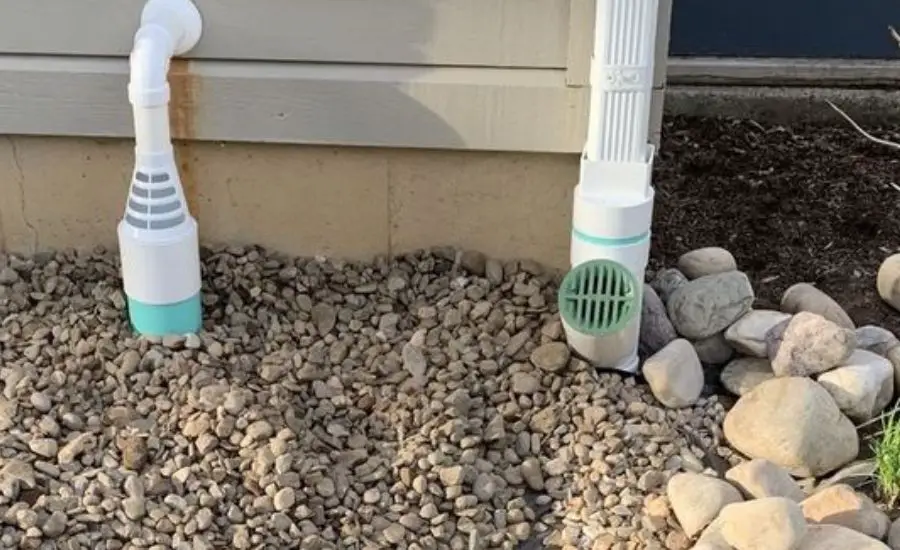
To guarantee that the discharge pipe operates effectively and does not pose environmental dangers, we will also go over the significance of appropriate installation and adherence to local codes and regulations.
Knowing how to conceal a sump pump discharge pipe can be a useful ability for homeowners, whether they want to improve the aesthetic of their yard or just want to prevent trip hazards.
There are many suggestions that we overlook when working on improving our home. These concepts can be even simpler to overlook when discussing floods and water damage in our houses, despite seeming so basic. Because of this, the possibilities are discussed below.
You have the following choices:
Bury the pipe underground: Hide the sump pump discharge line underground. This idea is one of the most popular ways to conceal it. To accomplish this, dig a trench that is at least 12 inches deep and slope it away from the house by 1/8 inch every foot.
The discharge pipe should have a minimum diameter of 1-1/4″ and should be buried in gravel or soil.
Run the line through a drainage ditch: You can run the sump pump discharge line through a natural or man-made drainage ditch in your yard. This can assist conceal the water flow from the drainage pipe or the drainage system, while also lowering your risk of erosion and yard floods.
Plant vegetation around the pipe: One of the sump pump discharge ideas is planting plants around it. In addition to providing additional drainage and erosion control, this can assist conceal the drainage system. However, it’s crucial to pick plants that can withstand moisture and water flow and won’t obstruct the sump pump discharge pipe’s efficient operation.
Use a decorative cover for your home’s exterior: You can cover it with a beautiful cover for your home’s exterior, rather than bury it or run it via a drainage ditch. These covers can be used to conceal the sump pump drain pipe in the landscape and come in a range of materials, including plastic, metal, and stone.
The sump pump pipe must be fitted correctly and must adhere to all local norms and requirements. To avoid groundwater contamination or other environmental issues, some localities may have special rules regulating the disposal of water.
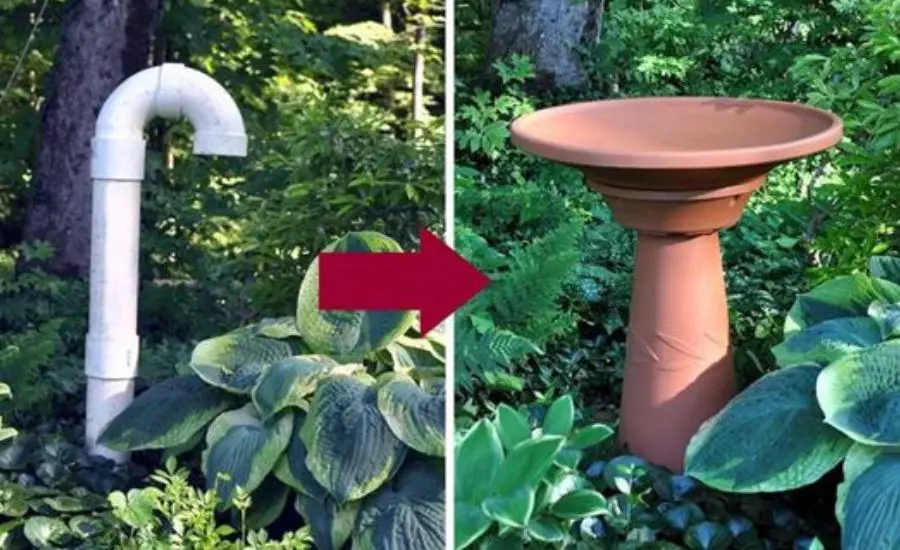
Contents
Advantages
There are various benefits, including:
Aesthetics
Improving aesthetics is one of the main benefits. In addition to being unattractive, an exposed pipe can ruin the look of your landscaping or yard. Hide the pipe to give the design a more unified and appealing appearance.
Safety
The one that is left exposed might become a trip danger in your yard. Hide the pipe to reduce the chance of mishaps and injuries.
Protection
A pipe that is exposed is more susceptible to damage from the elements, lawnmowers, and other dangers.
The pipe’s lifespan can be increased, and its durability improved, by concealing it.
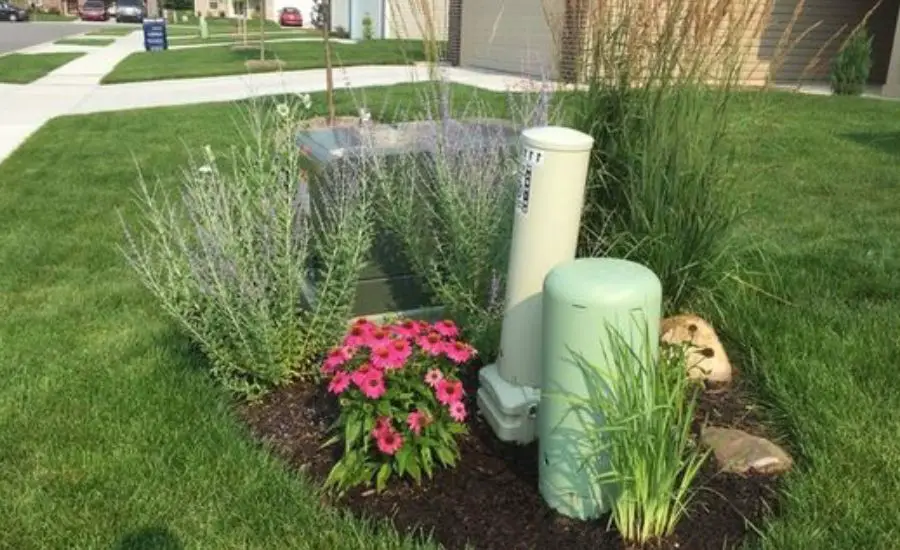
Benefits for the environment
Depending on how you decide, there might be advantages for the environment. For instance, burying the pipe can aid in reducing runoff and erosion, and planting vegetation near it can assist in absorbing and filtering water.
Compliance with laws and ordinances
Certain local laws and ordinances demand that it must be buried or hidden. Hide the pipe to assist ensure adherence to the rules and avoid possible fines or penalties.
All things considered, there are several advantages, including increased aesthetics, safety, protection, and adherence to laws and regulations.
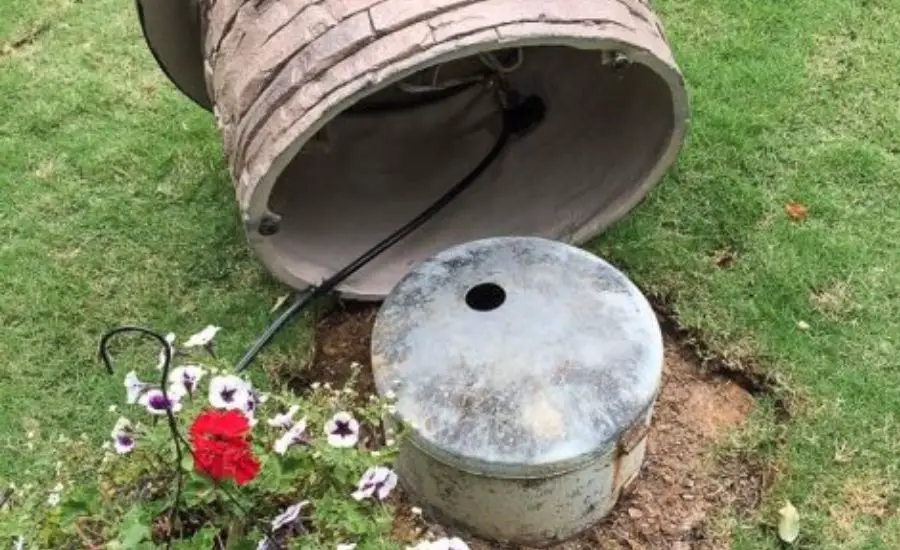
Disadvantages
There are several drawbacks to consider, including:
Cost
Depending on how it is concealed, there may be extra expenses.
For instance, digging up the ground and purchasing additional materials may be necessary to bury the pipe, raising the entire cost.
Maintenance
Some concealment techniques could need more upkeep than others. To ensure appropriate operation, subterranean pipes, for instance, may be more prone to obstructions and necessitate routine cleaning and maintenance.
Damage risk
Depending on the technique employed to conceal the pipe, damage may be a possibility. Burying the pipe, for instance, can make it more susceptible to harm from building work, excavating, or other operations.
Environmental issues
There might be possible environmental issues, depending on where and how the pipe is concealed. For instance, burying the pipe could make groundwater pollution more likely if it is not constructed or maintained correctly.
Codes and regulations
Although it could be required to conceal the pipe to do so, there might also be other conditions or guidelines that must be fulfilled. To ensure compliance and prevent any fines or penalties, it is vital to check with the local authorities.
Overall, hiding it can have several benefits, but it’s also vital to think about any potential drawbacks and make sure the solution is suitable for the circumstances at hand and complies with local standards and regulations.
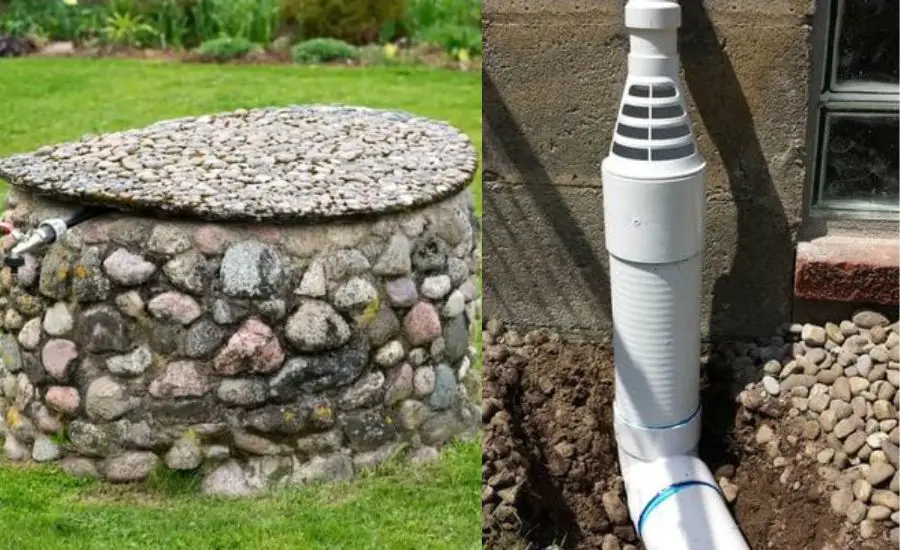
Things to consider before you hide the sump pump discharge
There are a few things to think about before concealing a discharge pipe to make sure it is functional and won’t pose any environmental risks. The following points should be remembered:
Local laws: To ensure that the effluent is disposed of properly, it is vital to check with local laws.
To avoid groundwater contamination or other environmental issues, some localities may have special rules regulating the disposal of water.
Installation: To ensure that it operates correctly, it should be installed correctly in a weep hole. The pipe must have a minimum diameter of 1-1/4 inches and slope away from the vertical check valve of the house at 1/8 inch per foot. The pipe’s end must be pointed away from the home’s foundation and at least ten feet distant.
Buried: The pipes have the potential to clog with material, which could result in backups and flooding. Make sure the PVC pipes are not blocked by PVC cement or frozen to prevent flooding, and that it is pointed away from the house’s storage space or basement floor foundation.
Maintenance: For it to work effectively, regular maintenance is required. This entails routinely inspecting the pipe for obstructions, leaks from heavy rain, or a damaged brick wall and, as necessary, cleaning or repairing the line.
Aesthetics: While concealing it might enhance the look of your yard and prevent flooding, it’s crucial to pick a technique that doesn’t obstruct the pipe’s normal operation. The most aesthetically beautiful choice, such as putting the pipe underground, may also be the option that experiences the most jams and leaks.
Before concealing it, consider these elements to make sure the pipe is functional and won’t endanger the environment.
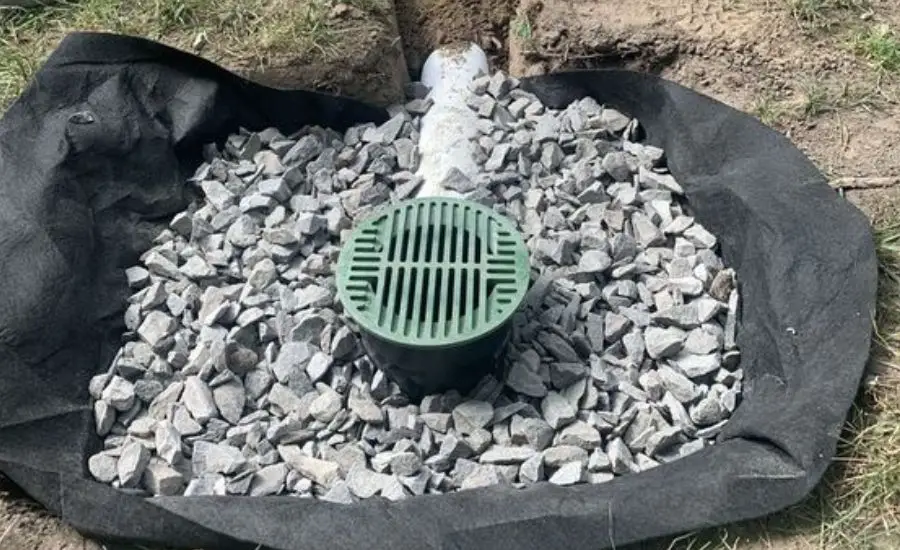
FAQ
What to do with sump pump discharge?
The water that a sump pump pumps out of a sump pit is known as a sump pump discharge. To avoid floods and property damage from water, it’s crucial to correctly release this sump pumps water.
Here are some possibilities on what to do with the discharge from a sump pump:
Direct discharge out from the foundation: It is the quickest and most straightforward technique to get rid of water from your home. Running a discharge pipe or hose from the sump pump to a spot at least 10 feet away from the foundation can do this. This will lessen the chance of water leaking back into the crawlspace or basement.
Discharge into a dry well: A dry well is a trench or chamber beneath the ground that is filled with gravel or another porous material to allow water to slowly seep into the soil. Water from your sump pump can be discharged into a dry well to reduce erosion and floods in your yard.
Dump into a storm sewer: Depending on your local laws, you may be permitted to directly dump the water from your sump pump into a storm sewer. A discharge pipe or hose from the sump pump can be connected to the storm sewer to do this.
Discharge into a rain barrel: You may also catch the water from the sump pump discharge pipe and utilize it to irrigate plants or for other outdoor uses by collecting it in a rain barrel. This is a fantastic method for water conservation and water bill reduction.
Regarding the proper disposal of sump pump effluent, it is vital to check local norms and regulations. To avoid groundwater contamination or other environmental issues, some localities may have special rules regulating the disposal of sump pump water.
Can you bury a sump pump discharge hose?
A sump pump discharge hose shouldn’t typically be buried. Backups and flooding can occur as a result of clogged or frozen buried sump pump discharge pipes or hoses. Water can flow back into the basement or crawl space when buried hoses corrode and leak over time.
It is advised to move the water away from the base of your property and onto a sloped area or into a dry well rather than burying a run sump pump discharge pipe. Use a hose or a drain pipe with a minimum diameter of 1-1/4 inches and a smooth interior to avoid obstructions to do.
When burying a sump pump discharge hose, it’s crucial to use a schedule 40 PVC pipe with a minimum diameter of 4 inches. The pipe of the sump pump system needs to be slanted away from the house at a rate of 1/8 inch per foot of PVC pipe and buried at least 12 inches underground. To stop debris from getting inside and blocking the discharge pipe, the end should be capped by a sump pump cover.
Regarding the proper disposal of sump pump effluent, it is vital to check local norms and regulations. To avoid groundwater contamination or other environmental issues, some localities may have special rules regulating the discharge pipe of the sump pump line.
Where is the best place for sump pump discharge?
A site at least 10 feet from your home’s foundation and on a sloped surface that drains away from your property are the ideal locations for sump pump discharge pipes. This will lessen the chance of flooding or water damage brought on by water seeping back into the basement or crawl space.
Here are some sump pump discharge ideas:
Direct discharge into a storm sewer: Depending on your local laws, you might be permitted to directly dump the water from your sump pump into a storm sewer. A pipe or hose from the sump pump can be connected to the storm sewer to do this.
The easiest and most frequent technique is to directly release the water onto a sloped area that drains away from your property. Running a sump pump discharge pipe or hose from the sump pump to a spot at least 10 feet from the foundation and on an angle can accomplish this.
Discharge into a dry well: A dry well is a trench or chamber beneath the ground that is filled with gravel or another porous material to allow water to slowly seep into the soil. Water from your sump pump discharge pipe can be discharged into a dry well to reduce erosion and floods in your yard.
Regarding the proper disposal of sump pump discharge ideas, it is vital to check local norms and regulations. To avoid groundwater contamination or other environmental issues, some localities may have special rules regulating the disposal of sump pump water.
What is a French drain?
A drainage system known as a French drain is designed to move water away from a particular location. A perforated pipe is inserted at the bottom of a trench that is lined with gravel or rock and filled with gravel or rock. To stop soil from getting inside the pipe, a layer of gravel or rock is subsequently placed over the trench.
Water or the scatter drainage flows into the perforated pipe from the trench after passing through the gravel or rock. Water can enter the pipe through the perforations and be routed out of the area where the French drain is installed. The water can then be directed to a dry well, drainage ditch, or another area where it can be dumped securely.
To keep water out of basements, crawlspaces, and other low-lying places, French drains are frequently employed to remove water from a sump basin. In yards and gardens, they can also be utilized to stop erosion and flooding. French drains can be tailored to fit unique drainage demands and remove water from the sump basin and can be put on both residential and commercial buildings.
This style of drainage system is particularly well-liked since it completely avoids the possibility of any discharge returning to and entering your home.
Overall, installing French drains is a good technique to divert water away from a specific region and avoid problems like water damage.
Conclusion
The beauty of your yard can be greatly enhanced by concealing a sump pump discharge pipe line, which also eliminates trip risks. The sump pump discharge pipe must, however, be installed correctly and adhere to all local laws and regulations.
A sump pump discharge pipe can be concealed in several ways, such as by burying it underground, directing it through a sump pump drainage pipe, or covering it with plants. Regardless of the technique you use, it’s crucial to make sure the sump pump discharge pipe is not blocked or frozen and that it is pointed away from the home’s foundation.
Regarding the proper disposal of the sump pump discharge pipe, it is also crucial to check local norms and regulations. To avoid groundwater contamination or other environmental issues, some localities may have special rules regulating the disposal of sump pump water.
Overall, knowing how to hide sump pump discharge pipe and conceal a sump pump discharge pipe can be an excellent method to enhance the look of your yard and eliminate trip hazards, but it’s crucial to make sure the pipe is put correctly and complies with local standards and regulations.
You can see that there are numerous methods for dispersing discharge and concealing its pipes. We hope this post has been helpful to you, whether you are looking to play the long game or just need a quick cure.
You want to prevent your basement flood, but you also don’t want your garden to flood due to insufficient outflow. Fortunately, every suggestion in this post for the discharge has been tried and true, having successfully assisted thousands of families in doing so. Hopefully, they can assist you as well.

